Search

One concept car that never made it to series production was the R8 with a turbocharged V12 diesel engine; the R8 V12 TDI concept. Background: In the 2010s, Audi was successful at Le Mans with the R10 TDI and wanted to establish diesel technology for sports cars, which had not existed until then. With 500 PS and a maximum torque of 1,000 Nm, the concept went from zero to 100 km/h in about four seconds – with an average consumption of less than ten liters. The final evolution of the first-generation R8 was the Audi R8 LMX, a special edition released in 2014 that was limited to 99 units and – like the R8 GT a few years earlier – was inspired by racing. With 570 PS, the R8 LMX raced from zero to 100 km/h in 3.4 seconds, making it the fastest Audi production car at the time. Another unique feature was the laser high beams, which the R8 LMX was the first production car to use. A laser module in each headlight generated a light beam with twice the illumination range of full LED headlights. In eight years, Audi produced just over 26,000 units of the first R8 at the Neckarsulm plant. The Audi R8 as a movie star Thanks to its movie-star looks and Hollywood flair, the Audi R8 was featured in numerous blockbusters. The R8 made its most famous cameo as the companion of Marvel hero Tony Stark, alter ego Iron Man. In all three movies, Stark, played by Robert Downey Jr., drove a first-generation Audi R8; in the third installment, it was an electric R8 e-tron. The second-generation R8 also starred in Marvel movies, such as “Captain America: Civil War” in 2016 and “Spider-Man: Homecoming” in 2017. In the 2004 sci-fi thriller “I, Robot,” the main character, Del Spooner, played by Will Smith, drove a super sports car whose basic shape was reminiscent of the Audi R8. The futuristic sports car was an Audi RSQ Concept, designed for the movie by Audi’s design team and then Head of Design Walter De Silva.
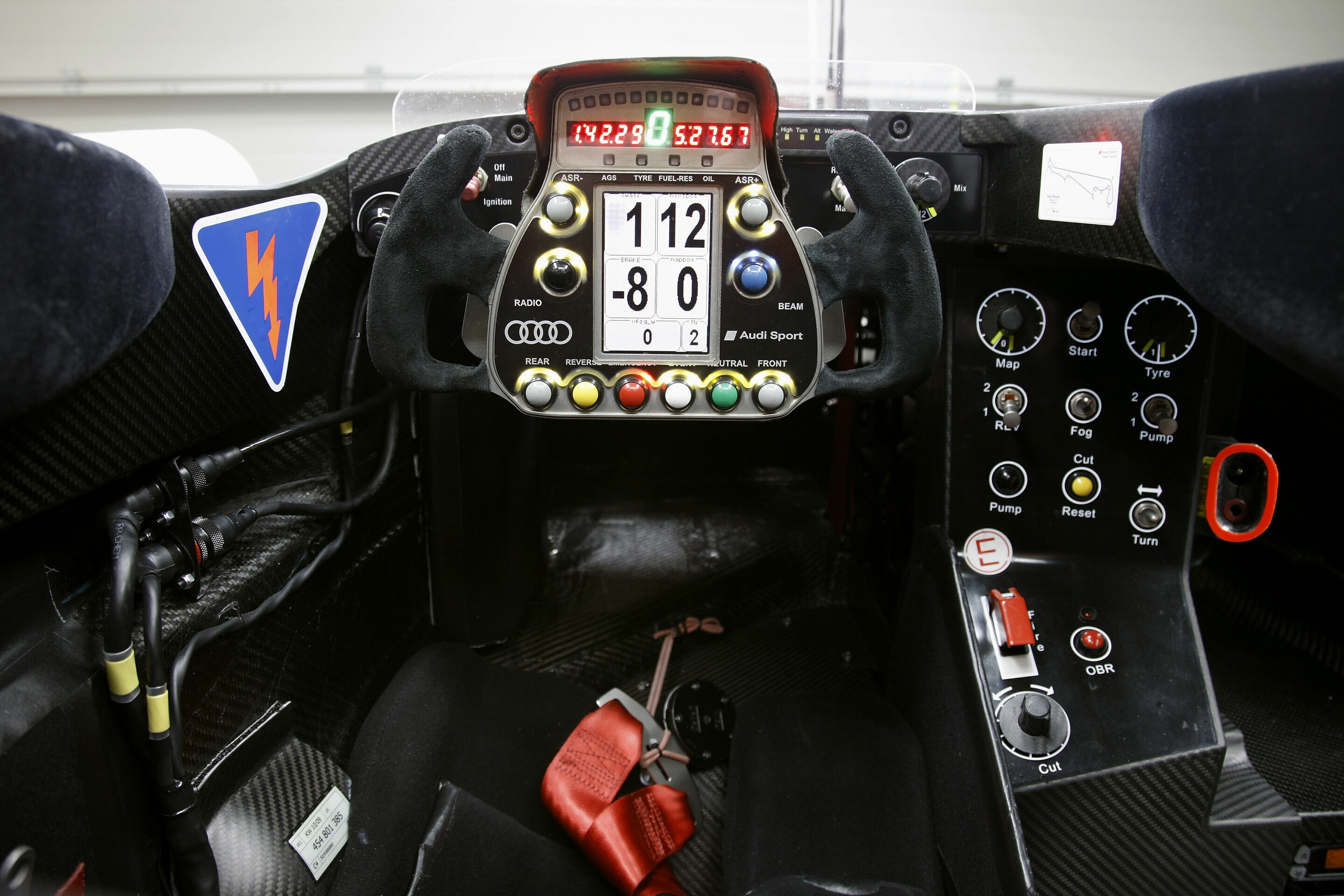 Tom Kristensen’s exclusive Le Mans countdown – part 8
Tom Kristensen’s exclusive Le Mans countdown – part 8
The V10 TDI engine is a bit noisier and harsher than the V12 TDI from the R10. From a certain speed onward, you couldn’t even hear the V12 TDI anymore at all, just the wind noise. You perceive the engine of the R15 plus in all rpm ranges. But when you lift in a long bend, you can actually hear the squealing of the tires – and that’s definitely unusual in a race car. I’d really like to take you out on a lap in the R15 plus but there’s simply not enough room on the passenger’s side. But, from now on, when you see the pictures from our onboard cameras at Le Mans, you may have a better idea of the things that go on in our cockpit day and night.” Yours Tom Kristensen
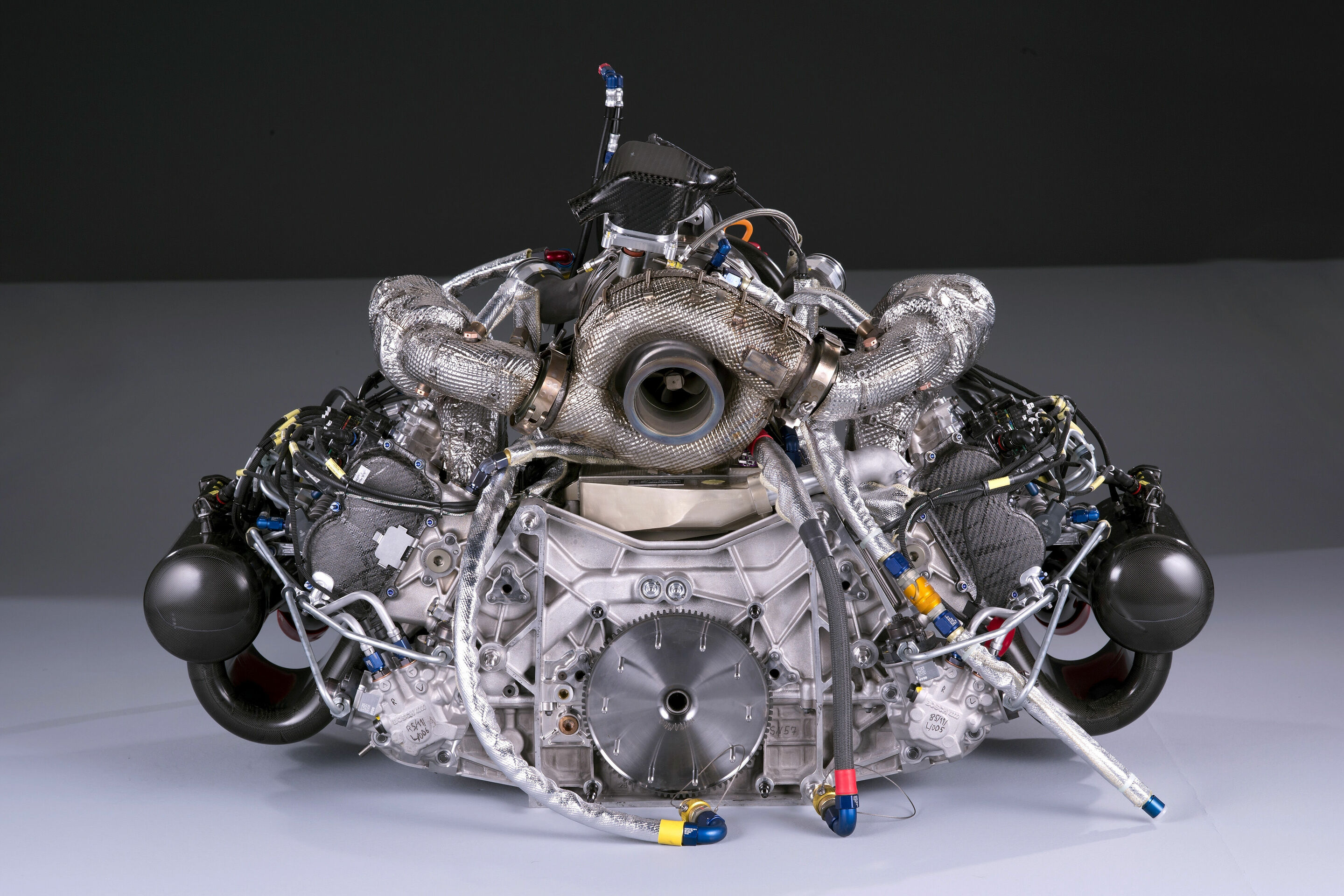 VTG technology for Le Mans success
VTG technology for Le Mans success
When Audi won the Le Mans 24 Hours with a TDI engine for the first time in 2006 the Audi R10 TDI managed to set its fastest race lap in 3m 31.211s. Despite significant restrictions imposed by the regulations the nominally less powerful Audi R18 TDI on clinching the brand’s tenth Le Mans victory last year did its best lap around the circuit in 3m 25.289s. How much faster might it have been if the regulations had not been changed? “Obviously, a large number of factors affect these measurable advances,” emphasizes Dr. Ullrich. “Vehicle technology as a whole, including the chassis, drive and aerodynamics, plays a role just like the weather, the driver or the racing situation. Yet the TDI race engines provide a particularly striking example of the progress that has been achieved.” In 2006, Audi won with a V12 engine which had 5.5 liters of displacement. Now, only six cylinders are operating in the most recent Audi R18. According to the regulations displacement was reduced to 3.7 liters. This means that in total the engine used in the current vehicle generation makes do with half of the cylinders, has 32 percent less cubic capacity and in the 2011 season made it possible for the R18 to improve its lap time by 2.8 percent nonetheless. “To achieve such enormous increases the combustion chamber of the engine operates with much higher pressures and temperatures today than in the past,” explains Ulrich Baretzky, Head of Engine Development at Audi Sport. “This has resulted in considerably higher performance of the piston areas and the cylinders.” Now, each cylinder has to deliver around 60 percent more performance than it did in the Audi R10 TDI in 2006. The engine developers at Audi Sport had to venture into new terrain for this purpose. The charging concept of the Audi R18 has been a particularly well-kept secret up to now.
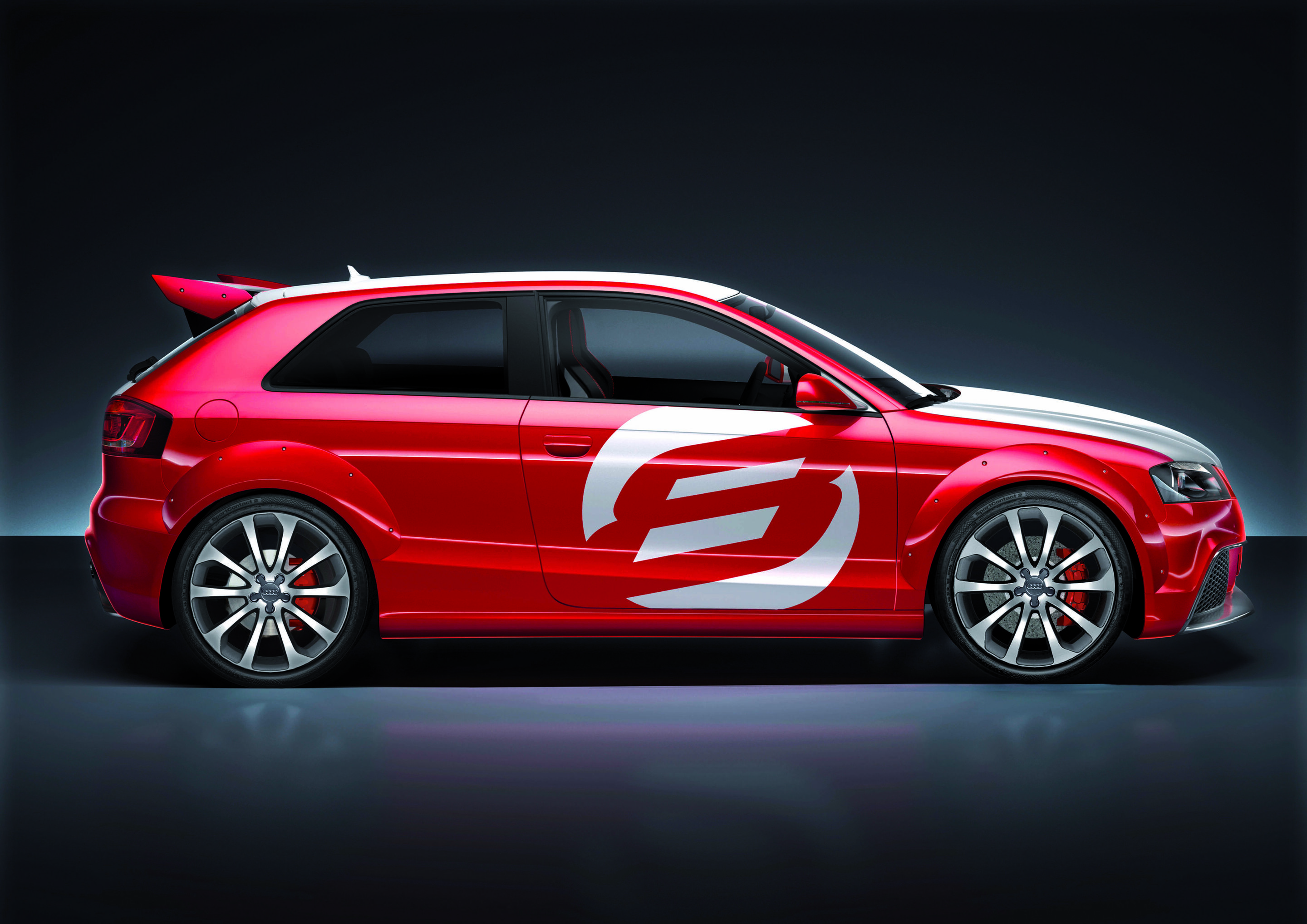 The Audi A3 TDI clubsport quattro
The Audi A3 TDI clubsport quattro
The triumphant advance that the diesel-powered Audi R10 TDI racing car has been enjoying for two years now in the Le Mans 24 Hours and in the American Le Mans Series is clear testimony to this technology's tremendous potential. The engine in the R8 TDI Le Mans study is closely related to the diesel race engine technically speaking – the high-performance sports car is equipped with a six-liter V12 power unit whose output of 368 kW (500 hp) and torque of 1,000 Nm (737.56 lb-ft) are good for a top speed comfortably in excess of 300 km/h (186.41 mph). The R8 TDI can also be seen at the Lake Wörther Tour, as the major annual gathering of horsepower-happy Audi and VW enthusiasts is known. Audi has already transferred the superior power of the TDI engines into its road-going cars: the TT and TT Roadster both feature a mighty two-liter unit generating 125 kW (170 hp) and 350 Nm (258.15 lb-ft) of peak torque, coupled to the quattro all-wheel-drive system. As is plain to see, Audi continues to build on its lead in the technology stakes.
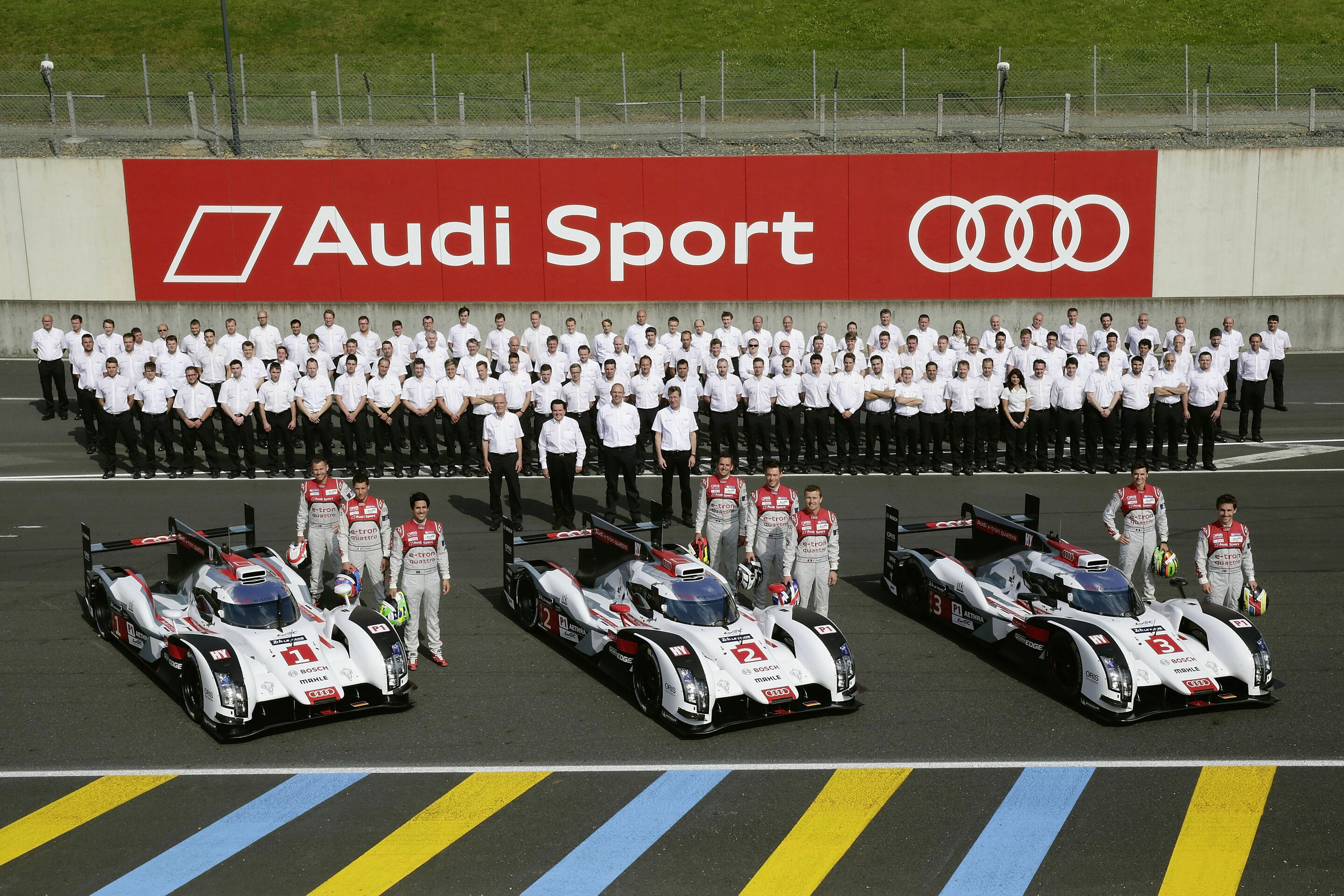 Audi with most fuel-efficient powertrain
at Le Mans
Audi with most fuel-efficient powertrain
at Le Mans
Compared with the 2006 5.5-liter V12 Audi R10 TDI, the first TDI engine used at Le Mans, the current race car consumes about 40 percent less fuel – while achieving comparable lap times. In concrete terms, 138.7 megajoules of fuel energy are available to the new R18 e-tron quattro per lap at Le Mans. This amounts to 6.16 liters less per 100 kilometers than the gasoline engines of the challengers, Toyota and Porsche, are allowed to consume. If the best teams, as last was the case in the 2012 season that saw only brief safety car periods, covered 378 laps, then Audi’s high-performance TDI engine would have 317.52 liters less fuel available in the course of 24 hours than the gasoline units. This results in an easily understandable comparative situation that every customer is familiar with in normal road traffic: how efficient is a diesel and how efficient a gasoline engine? The situation at Le Mans is aggravated by the sum of all ratings. A complex set of rules assesses the various technical concepts. Through energy allocations and fuel flow quantities, as well as the pit stop intervals resulting from fuel consumption and fuel tank capacity, the regulations aim to achieve an ‘equivalence of technology.’ “Audi has arguably never before faced such a difficult task at Le Mans as this year,” says Prof. Dr.-Ing. Ulrich Hackenberg, Member of the Board of Management of AUDI AG for Technical Development. “The current rating means that the efficiency advantages based on the principle of the TDI engine no longer suffice to also achieve an advantage across the racing distance. Still, we’re taking on this challenge in order to demonstrate our technological expertise. More than ever before, the perfect showing by a cohesive team will be crucial at Le Mans.” Last year’s winners Loïc Duval (F) and Tom Kristensen (DK), who is the Le Mans record holder with nine victories to his credit, are sharing the number 1 R18 e-tron quattro with Lucas di Grassi (BR).
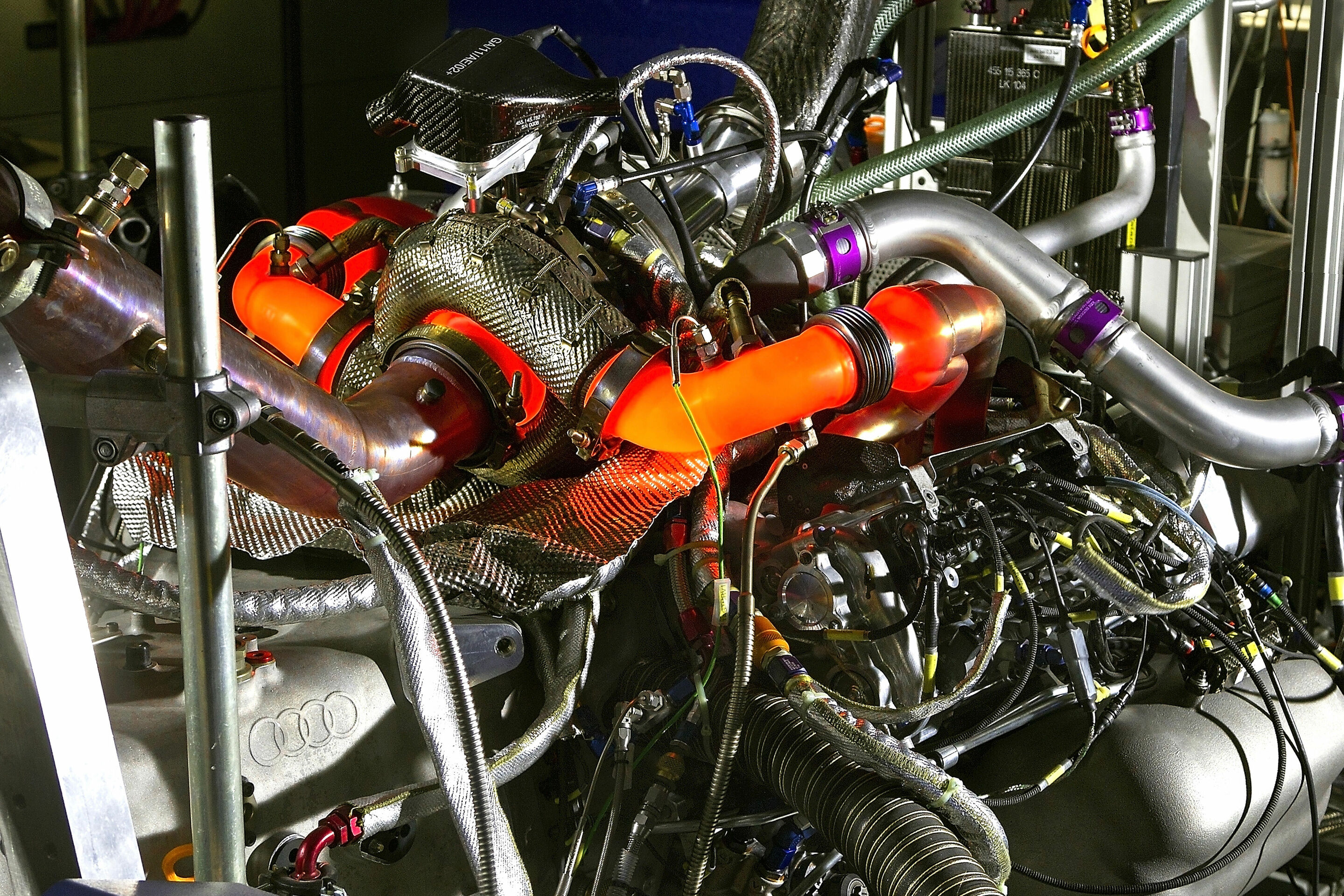 Audi at Le Mans: engine technology forges close links to production
Audi at Le Mans: engine technology forges close links to production
From 5.5 liters of displacement, the V12 engine of the Audi R10 TDI developed more than 478 kW (650 hp). Particularly impressive was its torque of over 1,100 Nm. This was the first Audi diesel engine with an aluminum cylinder block. -Audi’s diesel engine development directly benefited from Le Mans technology. Experiences gained in pre-development were fed into the first racing pistons. The injection system with two high-pressure pumps and piezo injectors has been refined by Audi for maximum specific performance and best efficiency in racing. The injection pressures of the hydraulic system and the ignition pressures in the cylinder have continually been increasing to this day. This way, combustion and power output could be optimized, which has been beneficial to production development as well. Today, injection pressures of 2,800 bar are achieved in racing and 2,000 bar in production cars. -Variable turbine geometry (VTG), which has long been in standard use in volume production, was introduced into racing by Audi in the V10 TDI in 2009, following several years of development. The biggest challenge was posed by the high temperatures of over 1,000 degrees centigrade. VTG technology clearly improves response behavior. In 2010, Audi with the R15 TDI not only celebrated victory at Le Mans but, after completion of 397 laps and 5,410 kilometers, broke the absolute distance record, which had existed for 39 years. -The most incisive change, as well as a major technical achievement by the Audi motorsport engineers, was brought about by the engine regulations for 2011. For diesel engines, the regulations forced the engineers to reduce the volume by 1.8 to 3.7 liters. Audi developed a V6 TDI engine packed with innovations. The exhaust side is located inside the V with its 120-degree angle (‘hot side inside’). A double-flow mono-turbocharger is fed with the exhaust gas from both banks and its compressor is of a double-flow design as well.
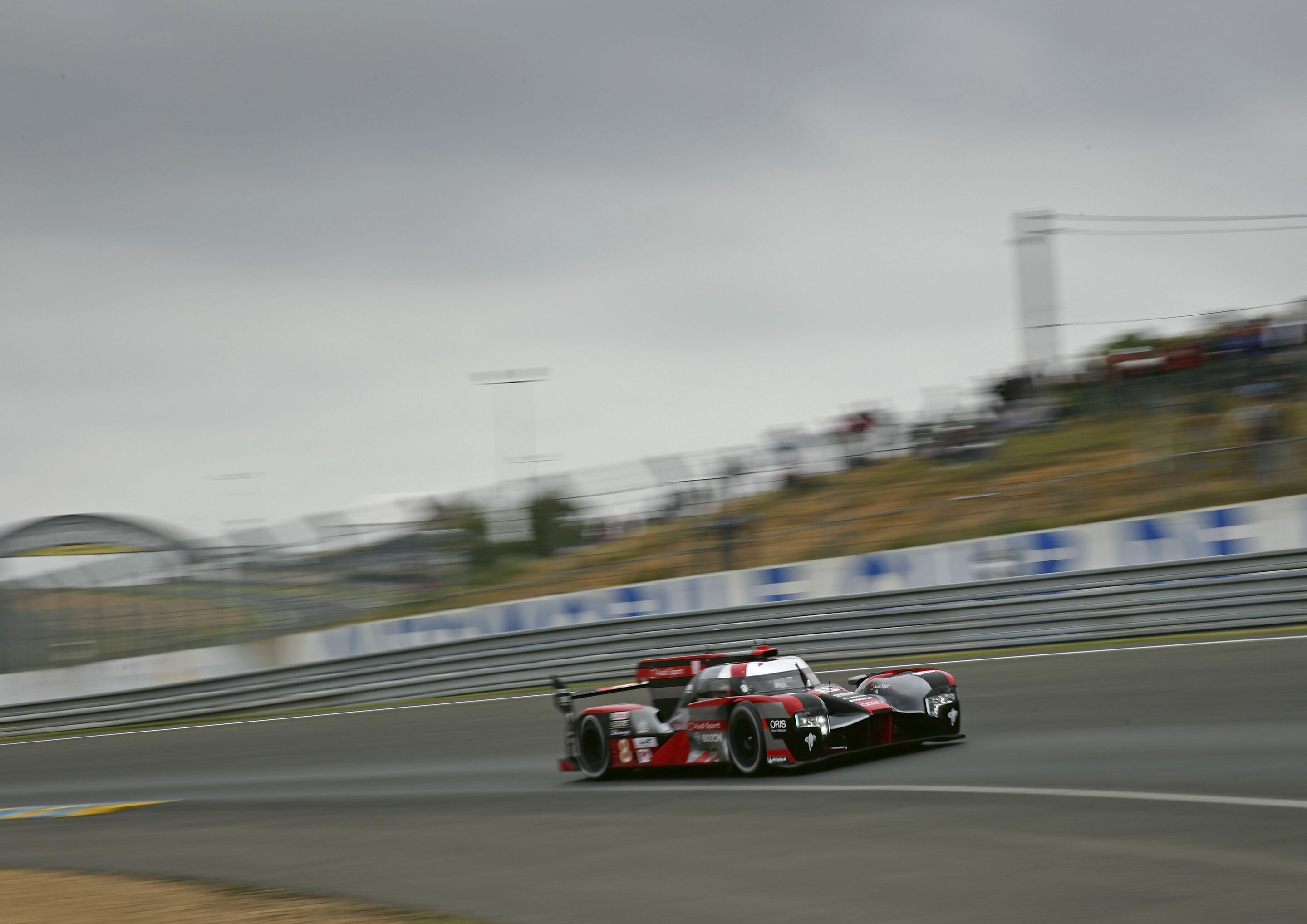 24 Hours of Le Mans: Toughest race of the year for Audi
24 Hours of Le Mans: Toughest race of the year for Audi
Ten years of TDI are a perfect occasion to look at numbers reflecting the progress that has been made: In 2006, the Audi R10 TDI had a V12 TDI engine with 5.5 liters of displacement. Now, a 4-liter V6 TDI powers the R18 – it uses 46.3 percent less fuel and the race car achieves better lap times. In addition to the powertrain made up of an internal combustion engine at the rear axle and a hybrid system at the front, Audi has tapped major aerodynamic potential, perfected its lightweight design, converted innovative ideas in the suspension, system solutions and other detailed areas into reality, and plays a pioneering role in lighting technology at Le Mans. With that, the 24-hour race at La Sarthe remains a perfect laboratory for testing technologies for tomorrow today and subsequently making them available to Audi’s customers. Eurosport will be airing live TV coverage of the practice sessions, including qualifying and warm-up, and the race with pre-race reports starting at 14:15. Actor Brad Pitt will be waving the cars off in his honorary starter role before the race starts on Saturday, June 18, at 15:00. Audi will be providing extensive reports on its Facebook (AudiSport) and Twitter (@audisport) channels. The brand’s fans can additionally watch on-board footage with telemetry data and further information at www.audi-motorsport.com. Note for editors: During the race week a Le Mans press kit will continually be updated with further content in the Audi Media Center. https://www.audi-mediacenter.com/en/presskits/24h-... – End –
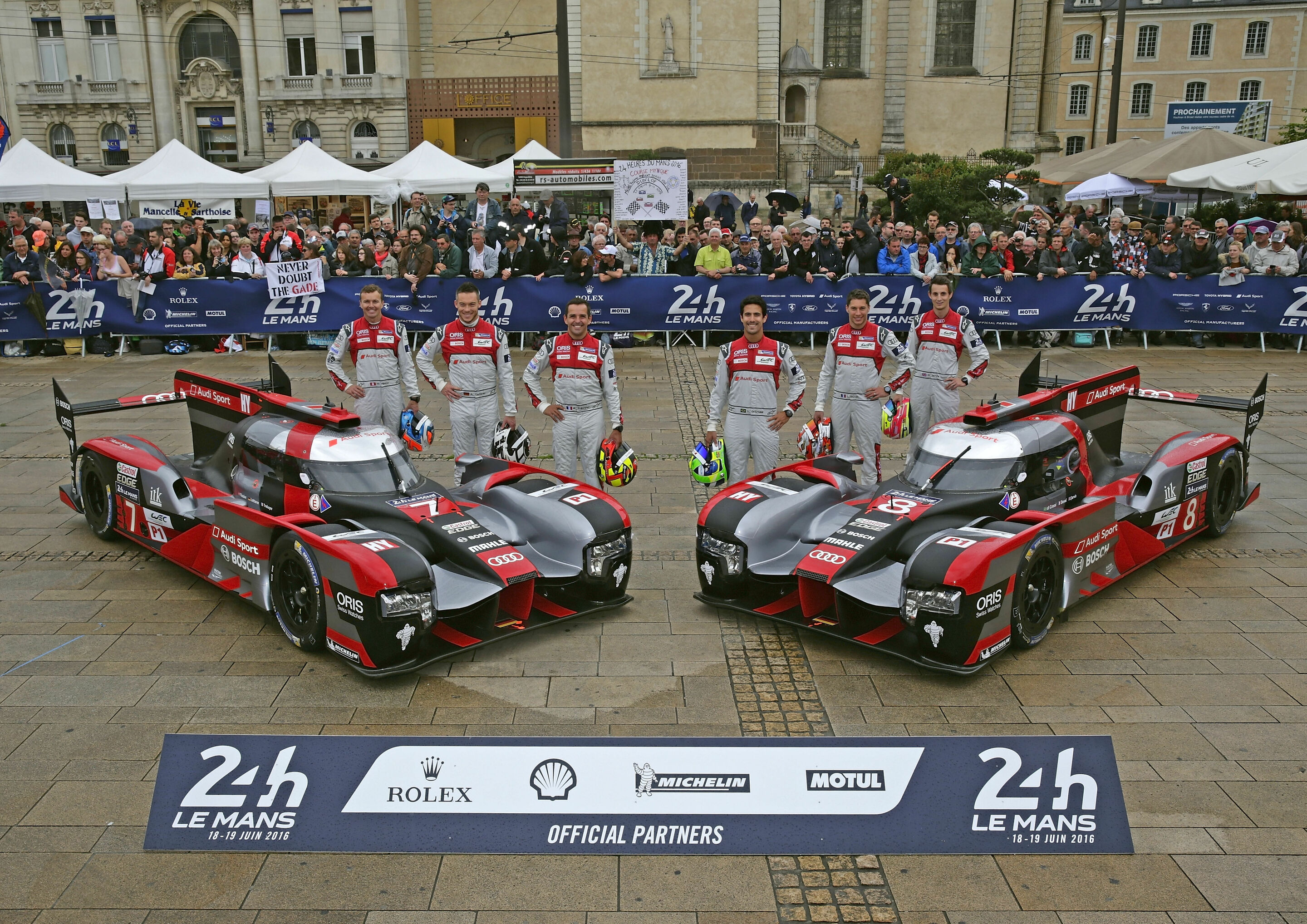 Audi to celebrate ten years of TDI at Le Mans
Audi to celebrate ten years of TDI at Le Mans
The Audi R10 TDI raced around the circuit so silently that it was near-imperceptible. “At high speed, even the wind noise was louder than that of the engine,” recalls Le Mans legend Tom Kristensen who, with nine victories, clearly leads the all-time winners’ list of the 24-hour race. Driving and shifting according to the sound level from 2006 on was history in the LMP1 race car. Technologically, Audi Sport in preparation for the 2006 season, mastered its greatest challenge to date. A V12 TDI engine not only meant a new powertrain. “We had to come up with a new concept for the entire race car,” says Head of Audi Motorsport Dr. Wolfgang Ullrich. “From the proportions of the race car and its weight distribution to airflow, the cooling air requirement and power transmission everything was new, as torque and output surpassed anything we’d previously known.” Audi Sport tested the diesel engine for Le Mans in collaboration with AUDI AG’s pre-production and production development. The 5.5-liter twelve-cylinder unit for use in racing was the first Audi diesel engine with an aluminum cylinder block. The Audi R10 TDI completed its initial rollout on the Italian race track at Misano on November 29, 2005. Exactly 200 days later, the diesel-powered sports car competed in the Le Mans 24 Hours and won. In between, 30,000 test kilometers, plus another 1,500 hours of testing the V12 TDI engine on dynamometers, were clocked up. Frank Biela/Emanuele Pirro/Marco Werner (D/I/D) crossed the finish line after 380 laps as the winners having covered 5,187 kilometers in the process. In the two subsequent years, the TDI engine from Ingolstadt and Neckarsulm again came out on top against fierce diesel competition on both occasions.
In 2010, Audi achieved the next major step with the R15 TDI. Its V10 TDI engine replaced the previous twelve-cylinder unit. It was 100 millimeters shorter, ten percent lighter and powered the open-cockpit sports car to a new top performance.